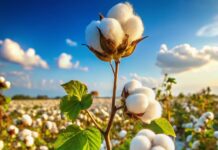The textile and apparel industry is a substantial contributor to global greenhouse gas emissions, accounting for approximately 2% annually (Perkins, Sadowski 2024). A major challenge facing this industry is its reliance on fossil fuel-based thermal energy for process heating, such as steam production and thermal oil heating, which significantly contributes to carbon dioxide emissions. As global demand for apparel continues to grow, the industry increasingly recognizes the need to decarbonize. This report presents a quantitative assessment and develops a roadmap for adopting low-carbon technologies and energy sources in wet-processing textile plants located in five major textile-producing countries: China, India, Vietnam, Bangladesh, and Indonesia. For those interested in a detailed analysis, the white paper can be downloaded here.
This report focuses on strategies for transitioning textile plants in these key countries to low-carbon thermal energy by shifting to alternative fuels and electrification technologies. The analysis includes the evaluation of electrification using electric boilers and heat pumps, as well as the effects of switching to alternative fuels such as biomass and natural gas. It is crucial to note that steam and thermal oil heating processes account for 50-60% and 30-40% of the fuel used in a typical textile wet-processing plant, respectively.
To develop a roadmap for this transition, extensive baseline data was collected on textile wet-processing facilities in each country. This comprehensive data gathering included information on existing boiler systems, energy consumption patterns, and specific heat requirements for various processes. The study utilized detailed techno-economic modeling to compare the performance and costs of alternative fuels and electrification technologies against traditional fossil fuel-based boilers, primarily coal-fired systems.
The report’s findings are based on a single, typical textile wet-processing plant in each country rather than aiming for an industry-wide transition. Projections were made regarding energy savings, emissions reductions, and energy costs associated with the transition. The electrification technologies assumed that grid electricity would be complemented by directly procured renewable electricity (RE), such as through Power Purchase Agreements or onsite generation. This trend is increasingly prevalent in the textile industry as companies look to enhance their sustainability.
Moreover, the analysis explored two renewable energy procurement pathways for the years 2030, 2035, and 2040, with distinctions based on the share of procured RE relative to grid electricity: Baseline RE Procurement and Ambitious RE Procurement. The Baseline Pathway assumes that each country will meet its Nationally Determined Contributions (NDCs) and stated net-zero targets, allowing textile facilities to supplement grid electricity with an increasing share of renewable energy. The Ambitious Pathway assumes more aggressive integration of renewable energy into the grid, enabling facilities to procure a higher percentage of their electricity from renewable sources.
In countries like China, India, and Vietnam, where renewable energy supply and regulatory frameworks for corporate procurement are more developed, the report suggests that textile facilities could achieve 100% renewable electricity procurement by 2030. This ambitious goal aligns with the industry’s broader sustainability objectives and reflects the growing commitment to reducing carbon emissions across the sector.
In conclusion, transitioning to low-carbon thermal energy represents a significant opportunity for the textile industry to reduce its environmental impact and align with global climate goals. This roadmap offers detailed strategies for key textile-producing nations, paving the way for a more sustainable and environmentally responsible future.






























